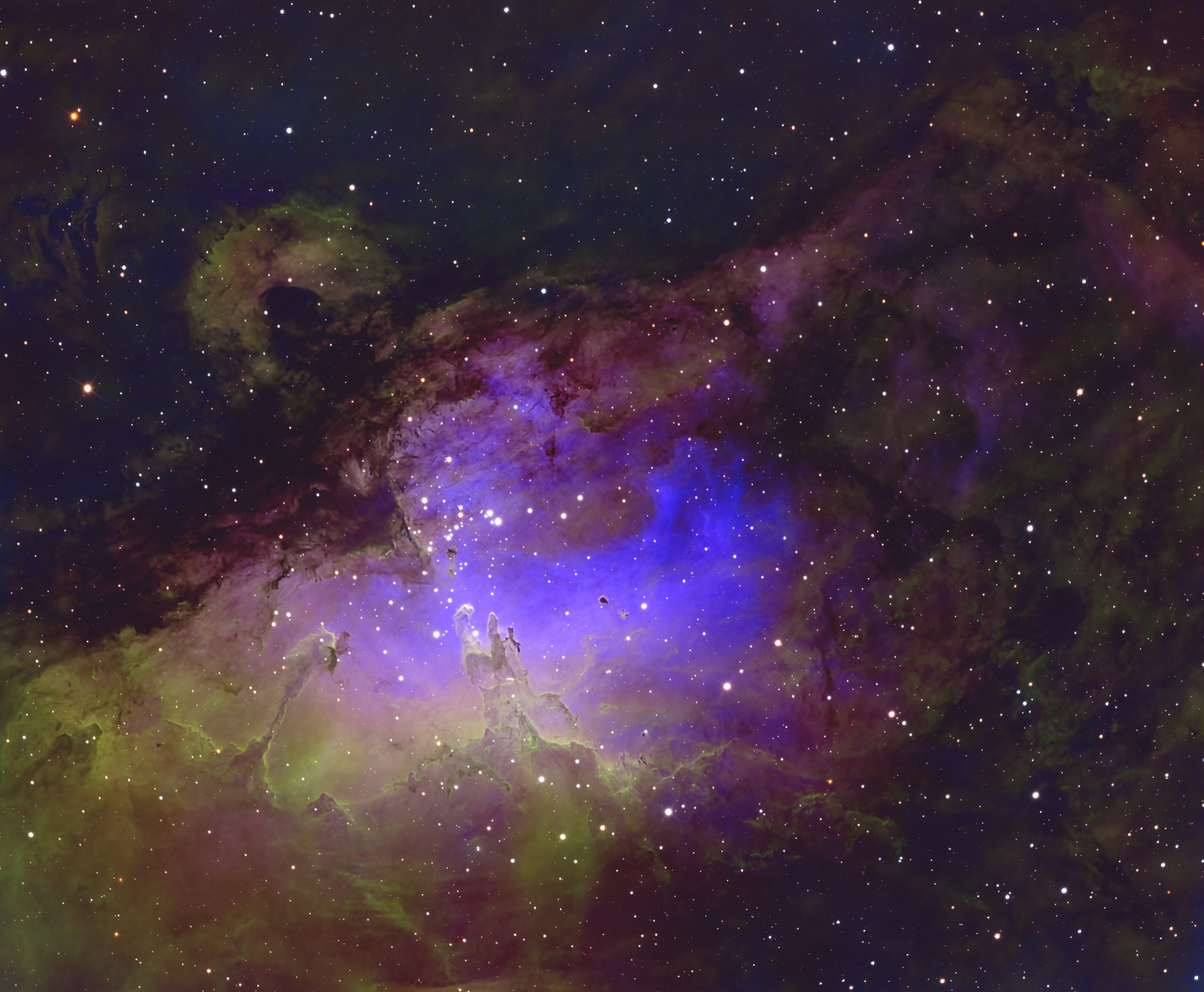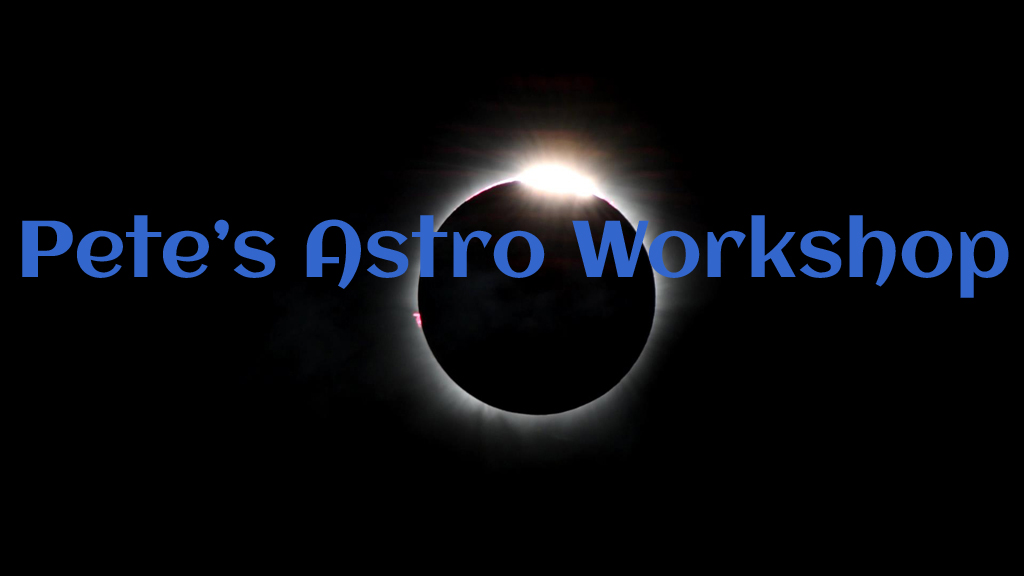M16 – The Eagle Nebula

Lying some 7000 light years away in the constellation of Serpens, M16 is both a star cluster and a glowing nebula of ionized hydrogen. At its centre are the ‘pillars of creation’ famously imaged by the Hubble space telescope. This is a star-forming region in which dark globules of proto-stars can be seen in high resolution images. The pillars are several light-years long so would easily stretch from our solar system to our nearest stellar neighbours in the Alpha Centauri system.
I learned recently that the pillars are individually labelled. At far left is Pillar V, also called The Spire; the centre three are I, II and III and the one to lower right is IV.
A few dark Bok globules are visible near the pillars.
I originally published a version of this image in 2019 (see here) then revised it in 2023 (which is shown below) but due to less-than-perfect calibration frames (and resulting gradients) I had to trim the frame more than I wanted. This image is the result of a complete re-process from start to finish. The calibration was improved by my finding flat frames from nearer the date of the original light frames acquisition, and I managed a better job of background removal.
In terms of the post-processing, I selected the HSO palette as used by the Canada-France-Hawaii observatory on Mauna Kea; I used the ImageBlend script to add the luminosity signal (having removed the stars first): and then the NBtoRGB script to assign realistic colours to the stars (I had just used the Lum stars in 2023).
Finally I used Curves to reduce the amount of green in the image and boost the OIII signal in the blue channel, to achieve what I regard as a more pleasing result.
Equipment: Planewave CDK-14 on 10Micron GM-2000 mount, FLI Proline P9000 CCD camera, Astrodon Lum-Ha-OIII-SII filters.
Exposure times Lum 5h, H-a 15h, OIII 12.5h, SII 11.5h.
The following notes apply to the 2023 version below.
Comparing the two images (2023 and 2019) reveals the superior sharpening and stretching results in the later version. This is especially noticeable in the central ‘Pillars of Creation’ area but also in the wisps of dark nebulosity in the upper part of the image.
As noted previously this is a narrowband image supplemented with Luminosity (clear) data to enhance the detail. SII is mapped to red, H-α to green and OIII to blue, which is known as the Hubble palette but with the three channels balanced so as to prevent the Hα signal from overwhelming the other two.
Initially this palette causes all the stars to take on a magenta colour. To fix this we need either to take RGB data for the stars or, as in this case, make an HOO image from the same data, extract the stars from that and use them to replace those in the SHO. Details of how this is achieved is beyond the scope of this post.
Equipment: Planewave CDK 14″ reflector on 10Micron GM2000 mount. FLI Proline P09000 CCD camera with Astrodon Lum, SII, Hα and OIII filters.
Exposure times: Lum 5 hrs, SII 11.5 hrs, H-α 15 hrs, OIII 12.5 hrs.
Data acquired with ACP Expert/Maxim DL and processed in PixInsight.



0 Comments